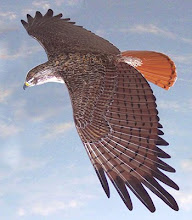Land Of Standing Rock
**
We are now down among the buttes,
and in a region, the surface of which
is naked, solid rock---
a beautiful red sandstone,
forming a smooth, undulating pavement.
The Indians call this Toom'-pin Tu-weap,
or "Rock Land", and sometimes
Toom'-pin wu-near Tu-weap'
or "Land of Standing Rock."
We continue our journey. In many places the walls, which rise from the water's edge, are overhanging on either side. The stream is still quiet,
and we glide along, through a strange, weird, grand region. The landscape everywhere, away from the river, is of rock,---cliffs of rock; tables of rock; plateaus of rock; terraces of rock; crags of rock---ten thousand strangely carved forms. Rocks everywhere, and no vegetation; no soil; no sand.
In long gentle curves, the river winds about these rocks.
**
Steve Reich: The Desert Music
When speaking of these rocks,
we must not conceive of piles of boulders, or heaps of fragments,
but a whole land of naked rock,
with giant forms carved on it:
cathedral-shaped buttes, towering hundreds or thousands of feet;
cliffs that cannot be scaled,
and canyon walls that shrink the river into insignificance, with vast hollow domes, and tall pinnacles, and shafts set on the verge overhead, and all highly colored---buff, red, gray, brown, and chocolate; never lichened; never moss-covered; but bare, and often polished...
Late in the afternoon, the water becomes swift, and our boats make great speed. An hour of this rapid running brings us to the junction of the Grand and the Green, the foot of Stillwater Canyon, as we have named it. These streams unite in solemn depths, more than one thousand two hundred feet below the general surface of the country. The walls of the lower end of Stillwater Canyon are very beautifully curved, as the river sweeps in its meandering course. The lower end of the canyon through which the Grand comes down is also regular, but much more direct, and we look up this stream, and out into the country beyond, and obtain glimpses of snow-clad peaks, the summits of a group of mountains known as the Sierra La Sal. Down the Colorado, the canyon walls are much broken.
We row around into the Grand, and camp on its northwest bank; and here we propose to stay several days, for the purpose of determining the latitude and longitude, and the altitude of the walls. Much of the night is spent in making observations with the sextant...
--John Wesley Powell
journal entry for July 17, 1869
**
William Henry Holmes: left triptych of Panorama from Point Sublime and The Grand Canyon at the Foot of the Toroweap--Looking East













<< Home